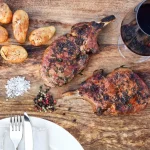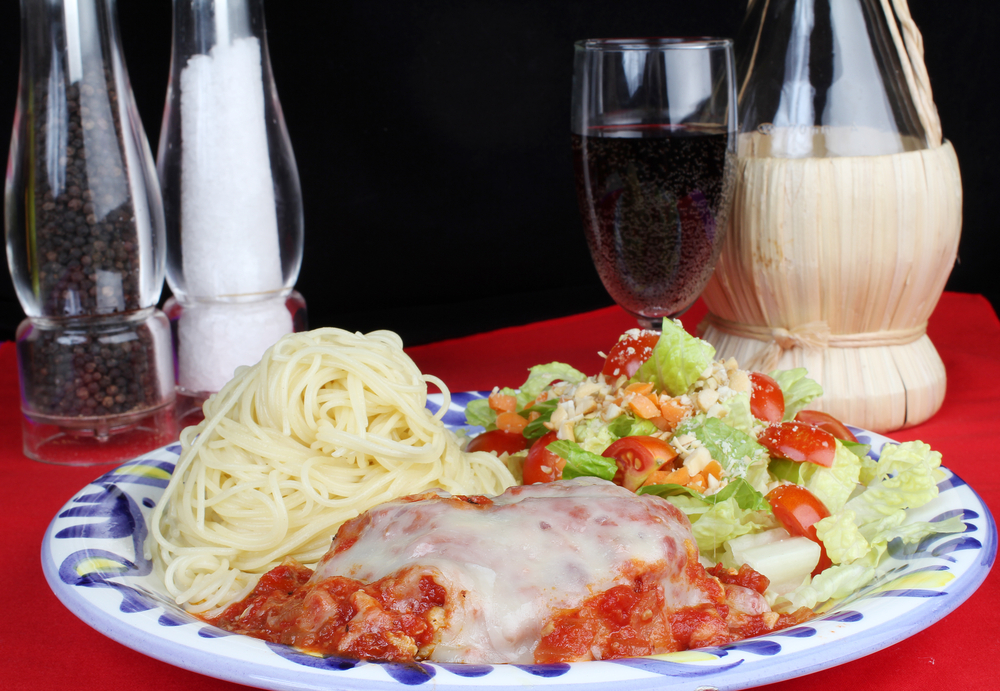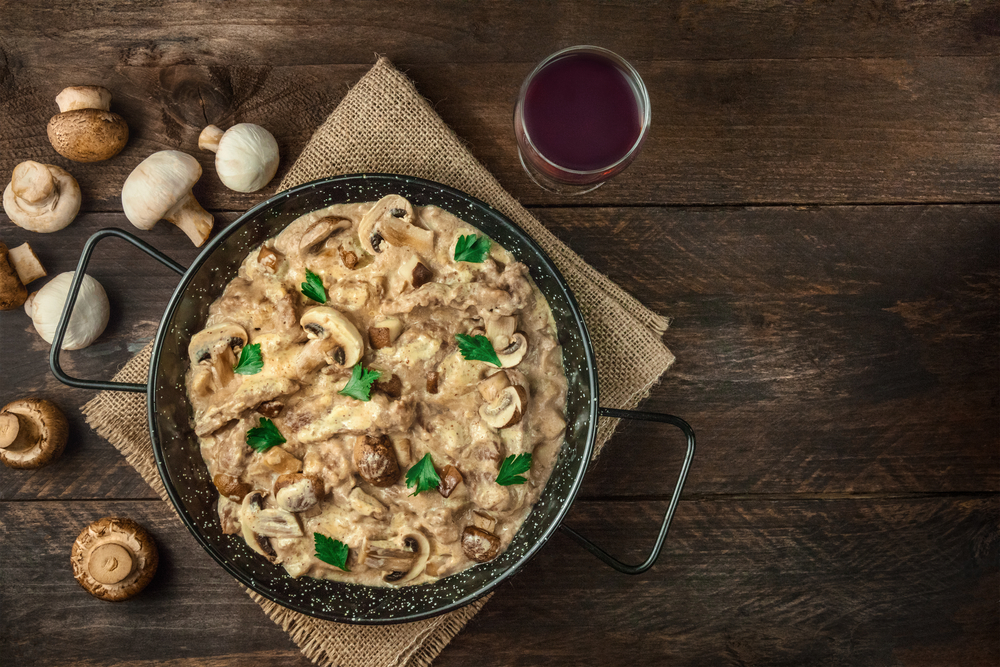When we say roast pork, what do you think of? Hours slaving away over the oven? Crispy skin? Succulent cracking? A rich honey glaze with orange peel generously peppered through it?
There is one thing that we always think about when we think of roast pork… wine.
A meal of roast pork is never complete until you have got the wine out.
One of the things that we love most about roast pork is that it can be done in so many different ways. And as a result of this, it can be paired with so many different types of wine.
Related: Have any pork chops you’re not sure what to pair with? Check out our guide.
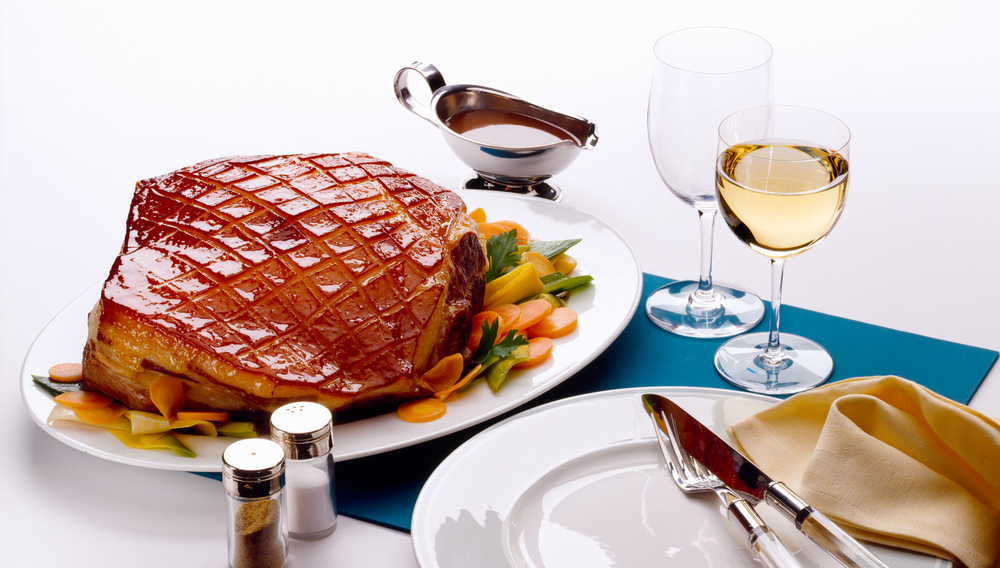
Wine And Glazed Pork
We are fans of all types of roast pork (we’ve probably made that very clear already). We like honey-glazed pork, pork drizzled in a thick sauce, and we love pork paired with a fruit compote.
A word of warning, to anyone looking to pair a glazed pork with a wine. You will not want to match the wine with the meat – and therefore this is not the right article for you. Instead, you will need to look at the sauce and its flavor notes and pair those with the wine instead.
We have some great articles on how to do this on our website.
Wine And Roast Pork
So, you are thinking about serving up a plain roast pork that has only been seasoned, and you’re wondering what wine to serve with it. Well, then you have come to the right place.
Before we go any further we are going to have to establish what kind of pork roast you are going to be cooking with. Your cut of meat should fit into one of the following three categories.
Tenderloin roasts – these are very, very lean cuts of pork. Sometimes they can be taken from the front of the animal, and sometimes from the rear.
Lean roasts – these typically contain some bone and the meat is encased with the thin outer layer of fat. A pork rib roast is a perfect example of a lean roast cut.
Fattier cut roasts – These cuts usually come from the shoulder of the pig. They have a thick layer of fat on their top which melts into the meat when it is cooked.
It is worth noting that sometimes pork shoulders are called pork buts even though they are taken from the front of the pig.
Each of these cuts of meat requires a different wine pairing.
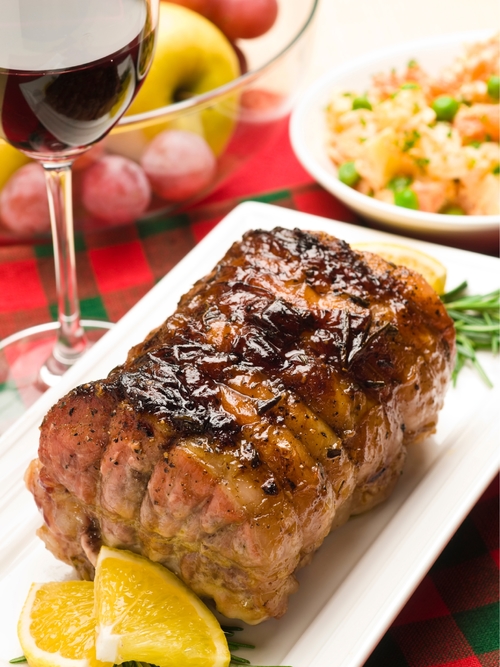
Tenderloin Cuts
Just because these pieces of meat are very lean, it does not mean they don’t make a beautiful roast when cooked correctly. They should produce a slice of tender meat that falls off the bone.
Obviously, these lean meats will not have much fat and they also produce little to no juice. The juice is very light and can sometimes be almost sweet.
Because this roast is so light on the palette, you will want to avoid a wine that is too overbearing, that is why we have three types of wine to recommend for you today.
Although if you’re absolutely desperate to pair this roast with a red, try a Pinot Noir.
Fiano – Fiano wines are “think”, this is what the industry normally calls oily or waxy. They are heavy on the tongue and typically taste like honey mead.
Pair with anything more complex than a tenderloin and they might overwhelm the meal. Fianos should be avoided if they are over three years old.
Riesling – While you may not have been familiar with Fiano, you will definitely know and have tried a Riesling. While they do vary in flavor – some having pineapple notes, others lemon, and some being more peachy – they are delicate enough to compliment pork no matter the bottle.
Chardonnay – Everyone loves a Chardonnay (did you know that over 13% of the wines sold in the USA are Chardonnay?). These highly acidic wines are grown in every french region.
They often have notes of stone fruits (particularly Peach), Apples, and oak. This is a flavorful wine that does not have too strong an aftertaste, making it all too easy to keep drinking all night.
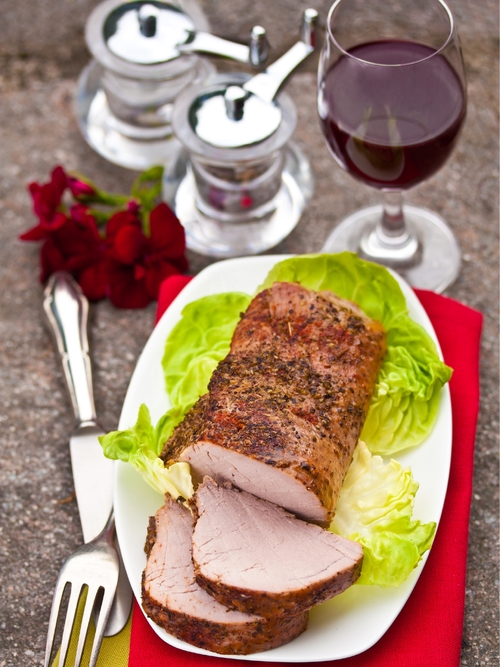
Fattier Roasts
The key selling point of a fattier cut of meat is its rich flavor. This is caused by the thick layer of fat melting over the meat as it cooks. The meat ends up being rich, savory, and smokey.
For this reason, you will want a wine that brings something to the table. You want a full-bodied red wine.
Merlot – Merlot is one of America’s favorite red wines. It’s full-bodied, but it doesn’t cloy on the tongue. It is just on the right side of dry to make it refreshing after a mouthful of roast meat. A good Merlot will have notes of pepper, oak, and a slight leafy aftertaste.
Pinot Noir – With a Pinot Noir you would expect to taste raspberries, cherries, oak, and a light smokiness. You may also get some sweet spices like cinnamon and vanilla and some notes of mushroom. The Noir is slightly lighter than the Merlot. It is medium-bodied.
Cabernet Sauvignon – If you are looking for a really complicated and classy wine, then look no further. You will find a good Cabernet Sauvignon will have notes of green peppercorns, dark chocolate, graphite, and wood smoke.
Lean Roasts
Lean roasts fall quite nicely in between fatty and very lean roasts. So, you probably won’t be shocked to hear that they can be paired with both red and white wines. You should try to pick a white wine with a bit of body to it, but most reds will pair sumptuously with lean pork roast.
Let’s not waste any time and just jump straight into these wine pairings.
Zinfandel – Our first suggestion is a rich Zinfandel. This is a heady wine with notes of plum, cherry, and black pepper. It comes with a first fruity wave, followed by a spicy second wave, leaving a smoky aftertaste. This aftertaste is perfect with roast meat.
Dolcetto – Dolcetto has some very similar notes to a Zinfandel. It has notes of cherry, prunes, and licorice. It has an almond-like aftertaste. If anything, the Dolcetto is a little more sophisticated than the Zinfandel.
Pinot Gris – Our choice for white wine is a Pinot Gris. They are known for their strong but fresh and spicy flavors. You will taste citrus straight away which perfectly balances out the sweetness and the notes of pink pepper.
Like Chardonnay, this is another wine we could drink all day.
- Shrimp Cocktail (and More) Wine Pairing Guide - 09/06/2022
- What Wine Serving Sizes Look Like: Standard Size and More - 08/06/2022
- How Much Sugar is in Wine: Glass and Bottle Sugar Content - 08/06/2022

